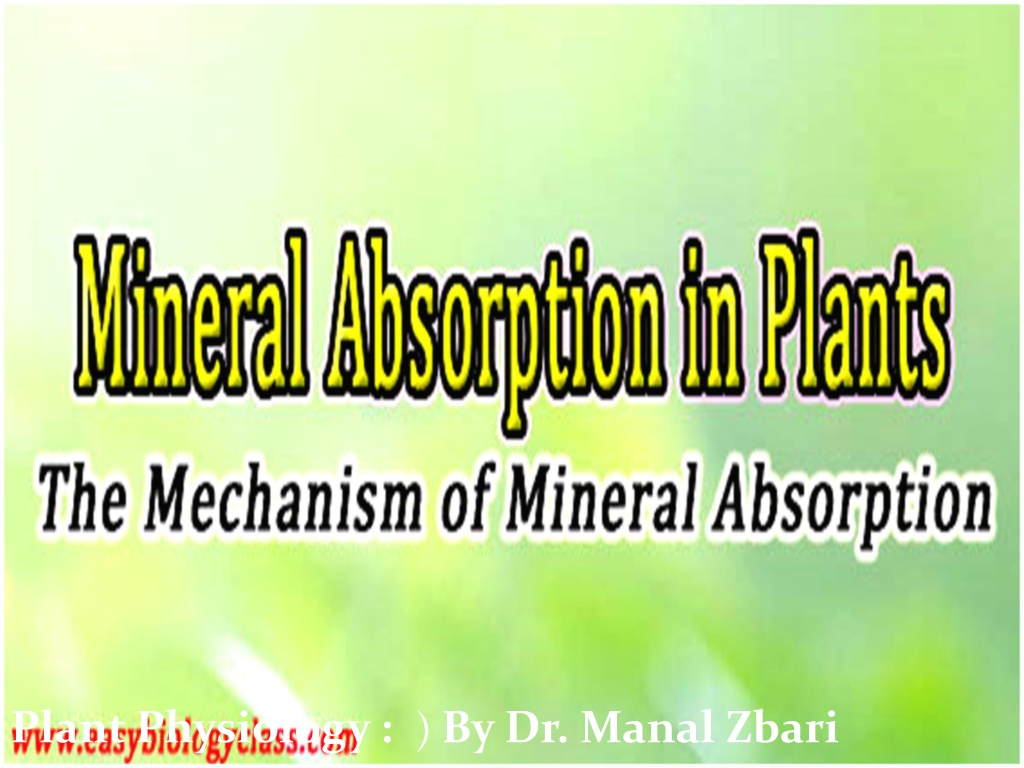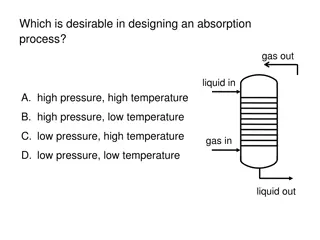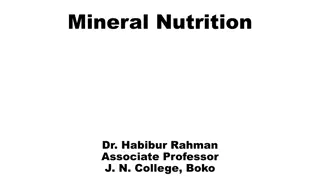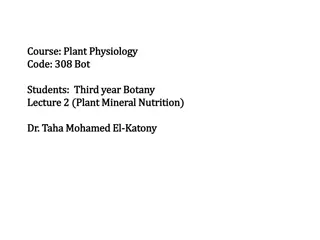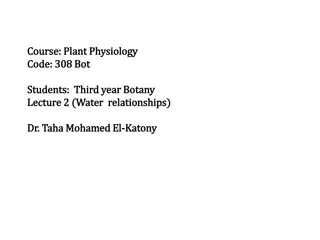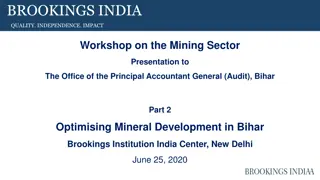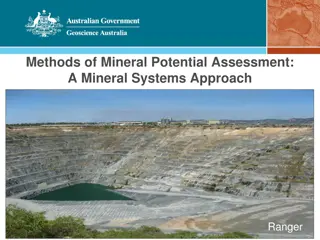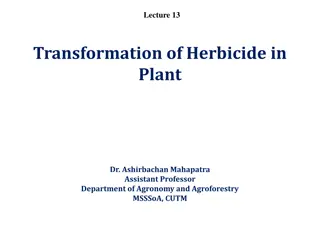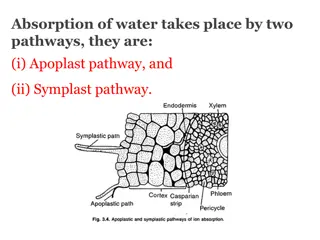Mineral Absorption in Plants: Mechanisms and Types
Plants absorb minerals from the soil as ions through the roots, with the process of mineral absorption being distinct from water absorption. Mineral absorption in plants can occur through passive or active methods, each involving different mechanisms and energy requirements. Passive absorption is a spontaneous process driven by diffusion along concentration gradients, while active absorption requires metabolic energy, typically ATP, and can occur against concentration gradients. Understanding the differences between passive and active mineral absorption is crucial for comprehending how plants efficiently uptake essential nutrients.
Download Presentation

Please find below an Image/Link to download the presentation.
The content on the website is provided AS IS for your information and personal use only. It may not be sold, licensed, or shared on other websites without obtaining consent from the author. Download presentation by click this link. If you encounter any issues during the download, it is possible that the publisher has removed the file from their server.
E N D
Presentation Transcript
By Dr. Manal Zbari ( Plant Physiology : (
Mineral Absorption in Plants (The Mechanism of Active and Passive Absorption of Minerals in Plants) Plants absorb minerals as ions Plants absorb minerals from the soil in the form of inorganic ions. Earlier it was thought that the absorption of minerals takes place in plants along with the absorption of water. In fact, the process of mineral absorption and water absorption are two separate processes. In order to absorb any minerals from the soil, it should be dissolved in the water.
Plants absorb most of the minerals through the roots. The large surface area of roots and its ability to absorb minerals from the soil even in minor concentration makes the roots more efficient in mineral absorption than any other organs. In roots, the mineral absorption usually takes place through the meristematic region of the root tip.
Minerals can be absorbed by both Passive and Active Methods There are two types of mineral absorptions based on the involvement of metabolic energy. They are (1) Passive minerals absorption (2) Active minerals absorption.
(1). Passive Mineral Absorption Passive mineral absorption is a passive process and it does not require the expenditure of metabolic energy. This type of mineral absorption occurs along the concentration gradient by simple diffusion. (2). Active Mineral Absorption Active mineral absorption is an active process and thus it requires the expenditure of metabolic energy (ATP). Active mineral absorption can occur both along and against the concentration gradient by osmosis or through special carrier proteins in the plasma membrane.
Difference between Passive and Active Mineral Absorption Sl.No. Passive Absorption of Minerals Active Absorption of Minerals A passive, physical and An active, chemical and 1 spontaneous process. nonspontaneous process. Do not require energy. Energy required. 2 Movement of ions occurs Movement of ions occurs 3 along the concentration against the concentration gradient. gradient.
Movement of mineral ions Movement of mineral ions 4 proceeds towards the does not proceed towards equilibrium constant. the equilibrium constant. Does not cause salt Cause salt accumulation 5 accumulation in the cells. in the cells. Rate of mineral absorption Rate of mineral absorption 6 is independent of is dependent on respiration. respiration. Does not require specific Always require specific 7 carrier molecules. carrier proteins.
The efficiency of passive mineral The efficiency of 8 absorption is very less since the active mineral concentration of minerals inside the absorption is cell is usually 10,000 times more than comparatively that in the surrounding soil. efficient.
The exact mechanism of mineral absorption varies: The exact mechanisms by which the plants absorb mineral from the soil vary greatly for various types of minerals. There are three main mechanisms of mineral absorption processes in plants. (1). Ion Exchange (2). Carrier Concept (3). Donnan s Equilibrium (1). Ion Exchange In ion exchange process of mineral absorption, the ions adsorbed on the surface of the root can exchange with the ions of the same charge from the soil solution. For example, H+ions adsorbed on the surface of root cells can be exchanged with K+ions in the soil. Two theories have been proposed to explain the mechanism of ion exchange (a) Contact exchange theory and (b) Carbonic acid exchange theory.
(a). Contact Exchange Theory: According to contact exchange theory, the ions adsorbed on the surface of root cells and clay particles are in continuous oscillation. When the root and clay particles are in close contact with each other, the oscillation radius of ions on the clay particles may overlap with the ions adsorbed on the root cells. When these oscillation radii overlap, there is a possibility of spontaneous exchange of ions between clay particles and root surface. (b). Carbonic Acid Exchange Theory: According to carbonic acid exchange theory, the CO2produced in the root cells due to respiration combine with water to form carbonic acid (H2CO3). The carbonic acid is immediately dissociated into H+and HCO3 ions. The H+ions thus formed are exchanged with cationson the clay particles.
(2). The Carrier Concept According to this theory, the plasma membrane is completely impermeable to some ions. The absorption of these ions is facilitated by some special proteins on the plasma membrane called Carrier Proteins . First, the carrier proteins are combined with the ions to form the carrier-ion-complex. The carrier-ion-
complex can move across the plasma membrane. When the carrier- ion-complex reaches the inner surface of the membrane, they release the ions into the lumen of the cell. After this, the carrier protein will go back to the outer surface to accept new ions. (3). Donnan Equilibrium The Donnan equilibrium explains the accumulation of some mineral ions inside the cell against the concentration gradient without the expenditure of metabolic energy. According to this theory, inside the root cells, there are some ions called Indiffusable Ions or Fixed Ions, which do not diffuse outside through the plasma membrane. The plasma membrane is permeable to other type of cations and anions. If a cell has an accumulation of cations as fixed ions, such a cell can absorb anions from the soil in order to maintain the electrical potential balance. The absorption of anion in this case causes an equilibrium of both cations and anion inside the cell. This equilibrium is called Donnan equilibrium. By attaining the Donnan equilibrium, the root cells can absorb any minerals in their ionic form.
